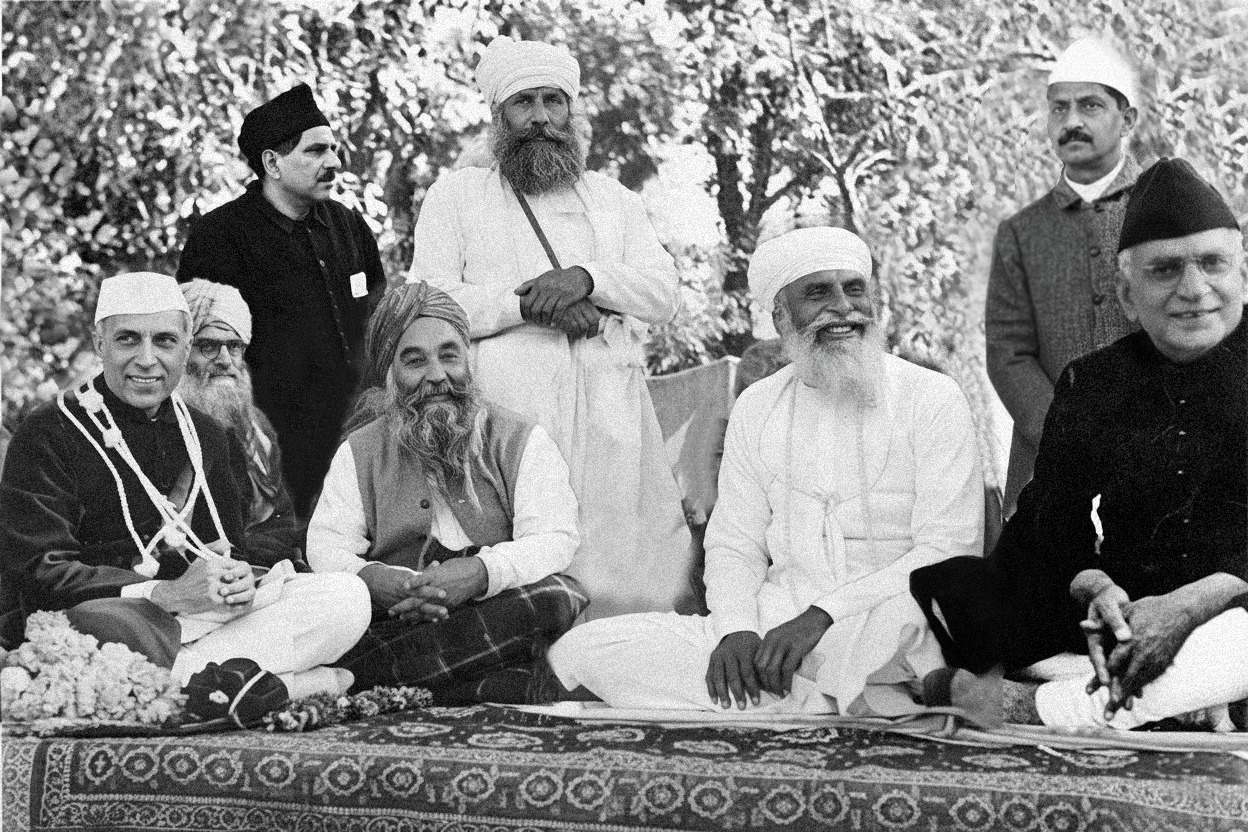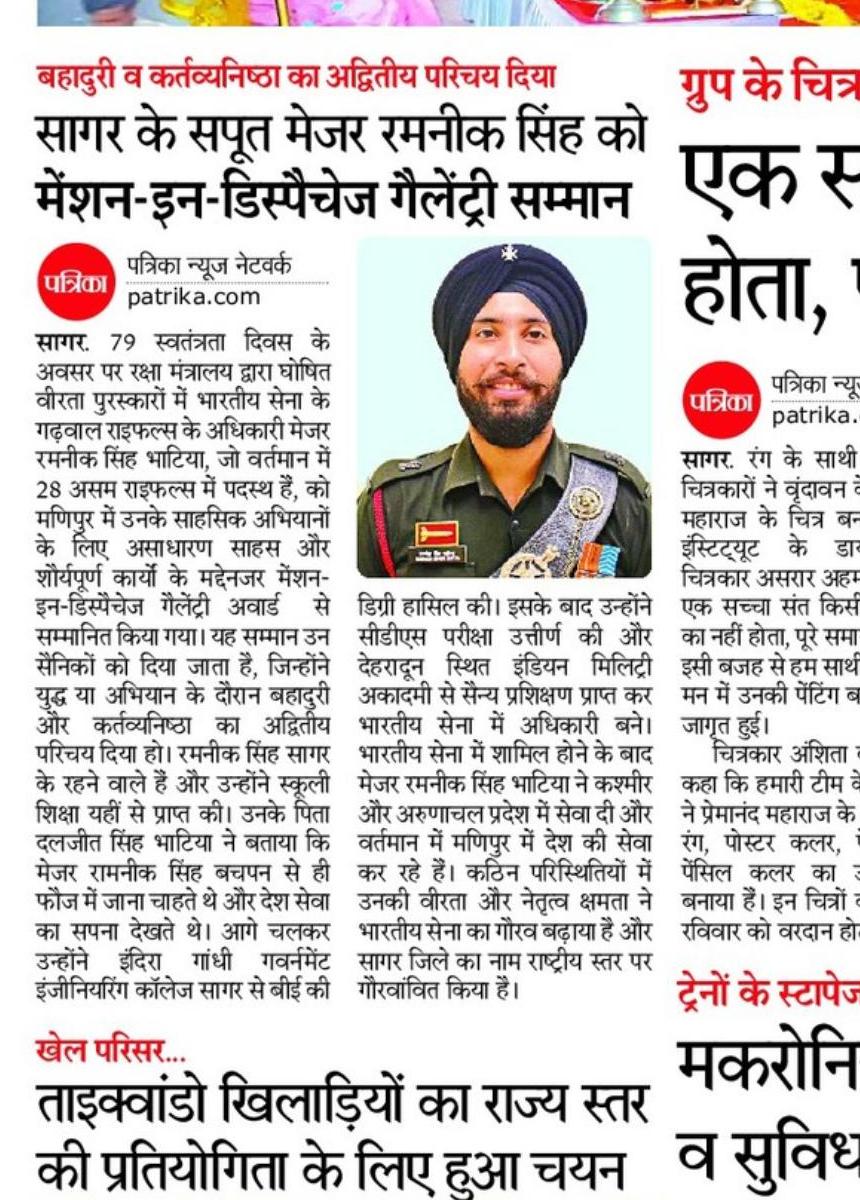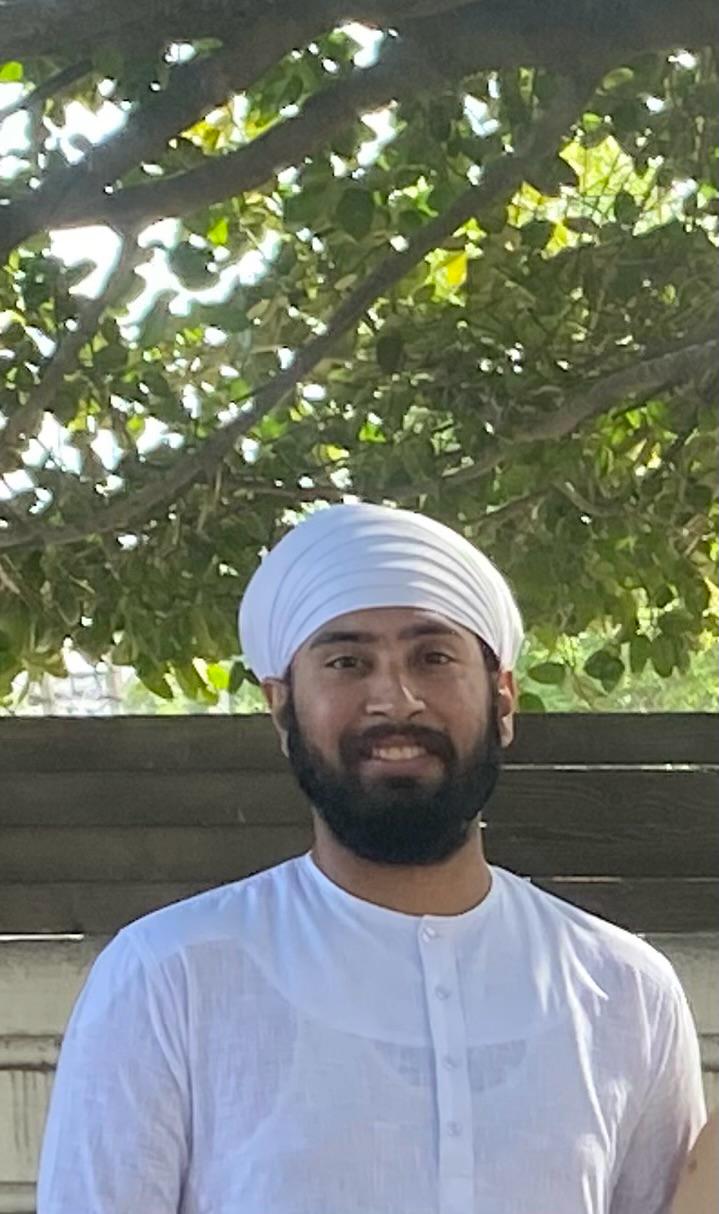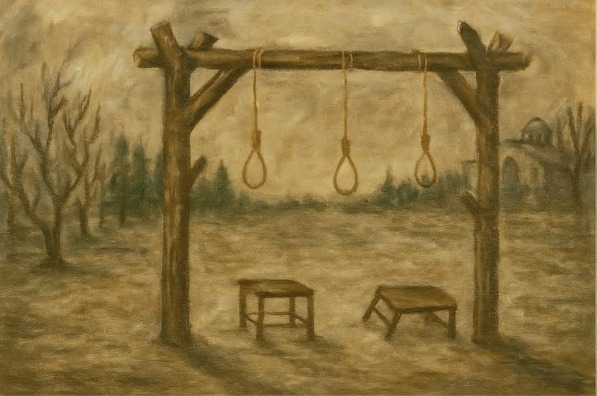News updates
-
'ਕੂਕਾ ਕਾਰ' ਦੇ ਮਰਮ ਦੀ ਲੋਅਵਾਨ ਪ੍ਰਾਪਤੀ ਕੂਕਾ ਲਹਿਰ ਦੇ ਅਮਰ ਨਾਇਕ -I, II, III
Date: 18 Nov 2025Read full article ਸਧਾਰਨ ਪੰਜਾਬੀਆਂ ਦੀ ਅਸਧਾਰਨ ਕਰਨੀ ਸਦਕਾ ਗ਼ਦਰ ਪਾਰਟੀ ਲਹਿਰ ਤੋਂ ਵੀ ਅੱਧੀ ਸਦੀ ਪਹਿਲਾਂ ਸ਼ੁਰੂ ਹੋਈ ਕੂਕਾ ਜਾਂ ਨਾਮਧਾਰੀ ਲਹਿਰ ਨੇ ਪੰਜਾਬੀ ਇਤਿਹਾਸ ਨੂੰ ਅਗਾਂਹ ਤੋਰਿਆ, ਨਰੋਏ ਪੂਰਨੇ ਪਾਏ, ਨਿੱਗਰ ਰਵਾਇਤਾਂ ਤੋਰੀਆਂ, ਸਾਡੇ ਅਨੁਭਵ ਨੂੰ ਨਿਖਾਰਿਆ, ਸਾਡੀ ਸਿਮਰਤੀ ਨੂੰ ਰੰਗ-ਰੱਤਾ ਕੀਤਾ। ਅਜੋਕਾ ਨਾਮਧਾਰੀ...
ਸਧਾਰਨ ਪੰਜਾਬੀਆਂ ਦੀ ਅਸਧਾਰਨ ਕਰਨੀ ਸਦਕਾ ਗ਼ਦਰ ਪਾਰਟੀ ਲਹਿਰ ਤੋਂ ਵੀ ਅੱਧੀ ਸਦੀ ਪਹਿਲਾਂ ਸ਼ੁਰੂ ਹੋਈ ਕੂਕਾ ਜਾਂ ਨਾਮਧਾਰੀ ਲਹਿਰ ਨੇ ਪੰਜਾਬੀ ਇਤਿਹਾਸ ਨੂੰ ਅਗਾਂਹ ਤੋਰਿਆ, ਨਰੋਏ ਪੂਰਨੇ ਪਾਏ, ਨਿੱਗਰ ਰਵਾਇਤਾਂ ਤੋਰੀਆਂ, ਸਾਡੇ ਅਨੁਭਵ ਨੂੰ ਨਿਖਾਰਿਆ, ਸਾਡੀ ਸਿਮਰਤੀ ਨੂੰ ਰੰਗ-ਰੱਤਾ ਕੀਤਾ। ਅਜੋਕਾ ਨਾਮਧਾਰੀ...
-
ਸ਼ਹੀਦੀ ਸਾਕਾ ਅੰਮ੍ਰਿਤਸਰ
Date: 15 Sep 2025Read full article
15 ਜੂਨ 1871 ਈ. ਸਵੇਰੇ ਸੁਵਖ਼ਤੇ, ਲਗਭਗ ਇੱਕ ਵਜੇ ਦੇ ਕਰੀਬ, ਨਾਨਕਸ਼ਾਹ ਫ਼ਕੀਰ ਅਤੇ ਜ਼ਖਮੀ ਉਮਰਾ 'ਮਾਸ਼ਕੀ' ਲਾਹੌਰੀ ਗੇਟ ਵਾਲੀ ਪੁਲਿਸ ਬੈਰਕ ਵਿੱਚ, ਬਦ-ਹਵਾਸੀ ਦੀ ਹਾਲਤ ਵਿੱਚ ਪੁੱਜੇ। ਘੋੜਸਵਾਰ ਪੁਲਿਸ ਸਾਰਜੰਟ ਜੁੰਮੇ ਖਾਂ, ਜੋ ਕਿ ਉਸ ਸਮੇਂ ਬੈਰਕ ਵਿੱਚ ਸੁੱਤਾ ਹੋਇਆ ਸੀ, ਨੂੰ ਜਗਾ ਕੇ ਆਉਣ ਵਾਲਿਆਂ ਨੇ ਰਿਪੋਰਟ ਕੀਤੀ ਕਿ ਥੋੜ੍ਹੀ ਦੇਰ ਪਹਿਲਾਂ ਦੀਨ ਗੜ੍ਹ ਦੇ ਬੁੱਚੜਖਾਨੇ ਦੇ ਕਸਾਈਆਂ ਉੱਤੇ ਕੁੱਝ ਅਣਪਛਾਤੇ ਵਿਅਕਤੀਆਂ ਵੱਲੋਂ...
-
Namdhari Pride Soars High with Gallantry Recognition
Date: 25 Aug 2025Read full article

Proud Moment for the Namdhari Community!
Major Ramneek Singh Bhatia (Namdhari) has been...
-
Shaheedi Dihara - Bhai Jhanda Singh Ji
Date: 11 Aug 2025Read full article
ਭਾਈ ਝੰਡਾ ਸਿੰਘ ਠੱਠਾ ਜੀ – ਅੰਮ੍ਰਿਤਸਰ ਸਾਕੇ ਦੇ ਨਿਧੜਕ ਸੂਰਮੇ ਦੀ ਸ਼ਹੀਦੀ ਦਿਹਾੜੇ 'ਤੇ ਸ਼ਰਧਾਂਜਲੀ
ਨਾਮਧਾਰੀ ਪੰਥ ਦੇ ਇਤਿਹਾਸ ਵਿੱਚ ਭਾਈ ਝੰਡਾ ਸਿੰਘ ਠੱਠਾ ਜੀ ਦਾ ਨਾਮ ਸਦਾ ਲਈ ਸੋਨੇ ਦੇ ਅੱਖਰਾਂ ਵਿੱਚ ਦਰਜ ਹੈ।...
-
Namdhari FC Secure Second Win, Dominate Group A in Durand Cup 2025
Date: 04 Aug 2025Read full article Namdhari FC continued their impressive run in the 134th Durand Cup with a 4-2 victory over the Indian Air Force Football Team at the Vivekananda Yuba Bharati Krirangan (VYBK), moving to the top of Group A.
Namdhari FC continued their impressive run in the 134th Durand Cup with a 4-2 victory over the Indian Air Force Football Team at the Vivekananda Yuba Bharati Krirangan (VYBK), moving to the top of Group A.
The match began with the Air Force taking an early lead in the 7th minute through midfielder ...
-
ਨਾਮਧਾਰੀ ਸੰਪ੍ਰਦਾਇ ਜੀਵਨ-ਜਾਂਚ ਦਾ ਸਿਧਾਂਤਿਕ ਪਰਿਪੇਖ
Date: 04 Aug 2025Read full articleਨਾਮਧਾਰੀ ਸੰਪ੍ਰਦਾਇ ਦੀ ਨੀਂਹ ਸਤਿਗੁਰੂ ਰਾਮ ਸਿੰਘ ਜੀ ਨੇ 12 ਅਪ੍ਰੈਲ 1857 ਈ. ਨੂੰ ਰੱਖੀ। ਜਿਸ ਦਾ ਉਦੇਸ਼ ਸੀ ਸਿੱਖ ਜਗਤ ਵਿਚ ਆ ਗਈਆਂ ਸਦਾਚਾਰਕ, ਭਾਈਚਾਰਕ ਅਤੇ ਆਤਮਿਕ ਕਮਜ਼ੋਰੀਆਂ ਨੂੰ ਖ਼ਤਮ ਕਰਨਾ । ਨਾਮਧਾਰੀ ਸੰਪ੍ਰਦਾਇ ਦੀ ਸਥਾਪਨਾ ਕਰ ਸਤਿਗੁਰੂ ਰਾਮ ਸਿੰਘ ਜੀ ਨੇ ਸਿੱਖੀ ਕਦਰਾਂ-ਕੀਮਤਾਂ ਨੂੰ ਸਿੱਖ ਭਾਈਚਾਰੇ ਵਿੱਚ ਮੁੜ ਤੋਂ ਸੁਰਜੀਤ ਕਰਨ ਲਈ ਸਫ਼ਲ ਯਤਨ ਕੀਤੇ। ਕਿਉਂਕਿ ਸਤਿਗੁਰ ਰਾਮ ਸਿੰਘ ਦਾ ਮੰਨਣਾ ਸੀ ਕਿ ਪੰਜਾਬ ਦਾ ਰਾਜ ਸਿੱਖਾਂ ਹੱਥੋਂ ਖੁੱਸਣ ਦਾ ਕਾਰਨ ਉਹਨਾਂ ਦੇ ਕਿਰਦਾਰ ਵਿੱਚ ਆਈ ਮੌਲਿਕ ਗਿਰਾਵਟ ਸੀ। ਇਸ ਲਈ ਮੁੜ ਤੋਂ ਸਿੱਖ ਰਾਜ ਦੀ ਪ੍ਰਾਪਤੀ ਲਈ ਪਹਿਲਾਂ ਆਪਣੇ ਕਿਰਦਾਰ ਨੂੰ ਉੱਚਾ ਚੁੱਕਣਾ ਲਾਜ਼ਮੀ ਸੀ।
...
-
ਓਨਾ ਓਡਵਾਇਰ
Date: 04 Aug 2025Read full article“ਹਿੰਦੋਸਤਾਨੀ ਆਗੂ ਵੀ ਨਾਅਹਿਲ ਤੇ ਨਿਕੰਮੇ ਨੇ। ਉਨ੍ਹਾਂ ਕੋਲ ਕੋਈ ਤਜ਼ਰਬਾ ਨਹੀਂ ਹੈ। "
"ਕਿਹੋ ਜਿਹਾ ਤਜ਼ਰਬਾ ?"
“ਰਾਜ ਭਾਗ ਦਾ ਤਜ਼ਰਬਾ।"
"ਸਿੱਧਾ ਕਿਉਂ ਨਹੀਂ ਕਹਿੰਦੇ ਕਿ ਦੇਸੀ ਹੁਕਮਰਾਨ ਵ੍ਹਾਈਟ ਰੂਲਰਜ਼ ਵਾਂਗ ਮੁਲਕ ਨੂੰ ਚੂੰਡ ਨਹੀਂ ਸਕਣਗੇ। ਨਾਲੇ ਇਹ ਤੂੰ ਕਿਵੇਂ ਕਹਿ ਸਕਦਾ ਏਂ? ਹੋ ਸਕਦਾ ਉਹ ਤੁਹਾਡੇ ਵੀ ਬਾਪ ਦਾਦੇ ਸਾਬਤ ਹੋਣ। ਮਾਈਂਡ ਨਾ ਕਰੀਂ ਮਾਈਕਲ---ਹੁਕਮਰਾਨ ਕਿਸੇ ਵੀ ਮੁਲਕ ਦੇ ਹੋਣ, ਦੇਸੀ ਹੋਣ ਜਾਂ ਵਿਦੇਸ਼ੀ; ਇੱਕੋ ਮਿੱਟੀ ਦੇ ਹੀ ਬਣੇ ਹੁੰਦੇ ਨੇ। ਫਰਕ ਸਿਰਫ਼ ਏਨਾ ਕੁ ਹੁੰਦਾ,...
-
ਕਰਤਾਰ ਸਿੰਘ ਸਰਾਭਾ
Date: 04 Aug 2025Read full articleਪੰਜਾਬ ਦਾ ਇਹ ਸ਼ੇਰ ਤੇ ਦਲੇਰ ਪੁੱਤਰ ਜ਼ਿਲ੍ਹਾ ਲੁਧਿਆਣਾ ਦਾ ਬਹਾਦਰ ਬੇਟਾ ਸੀ। ਇਸ ਦੀ ਉਮਰ 19 ਵਰ੍ਹੇ ਸੀ। ਇਹ ਉੜੀਸਾ (ਭਾਰਤ ਦਾ ਸੂਬਾ ਏ) ਦੇ ਰੇਵਨਸ਼ਾਹ ਕਾਲਜ ਦਾ ਪੜ੍ਹਿਆ ਹੋਇਆ ਸੀ। ਅੰਗਰੇਜ਼ ਸਾਮਰਾਜ ਦੀ ਫ਼ੌਜ ਨੂੰ ਬਗ਼ਾਵਤ ਲਈ ਤਿਆਰ ਕਰਨ ਵਾਸਤੇ ਇਸ ਨੌਜਵਾਨ ਨੇ ਫ਼ੌਜੀ ਅਫ਼ਸਰ ਦੀ ਵਰਦੀ ਪਹਿਨ ਕੇ ਬਨਾਰਸ ਤੋਂ ਬੰਨੂੰ ਤੱਕ ਦਾ ਸਫ਼ਰ ਸਾਈਕਲ ਤੇ ਕੀਤਾ। ਹਰ ਛਾਉਣੀ ਵਿੱਚੋਂ ਉਹਨੂੰ ਖ਼ਾਸੀ ਕਾਮਯਾਬੀ ਹੋਈ। ਕਰਤਾਰ ਸਿੰਘ ਸਰਾਭਾ ਕਿੰਨਾ ਨਿੱਡਰ ਸੀ- ਉਹ ਗਾਰਦਾਂ ਤੋਂ ਸਲਾਮੀਆਂ ਵੀ ਲੈਂਦਾ ਰਿਹਾ ਤੇ ਪੰਜਾਬੀ ਫ਼ੌਜੀਆਂ ਨੂੰ ਇਹ ਵੀ ਸਮਝਾਉਂਦਾ ਰਿਹਾ ਕਿ ਬਰਤਾਨੀਆਂ ਦੀ ਹਕੂਮਤ ਤੁਹਾਨੂੰ ਜੰਗ ਦੀ ਭੱਠੀ ਵਿੱਚ ਝੋਕ ਰਹੀ ਏ। ਮਰਨਾ ਤਾਂ ਓਥੇ ਵੀ ਏ ਪਰ ਜੋ ਤੁਸੀਂ ਬਗ਼ਾਵਤ ਕਰ...
-
ਕਰਹਿ ਜਿ ਗੁਰ ਫੁਰਮਾਇਆ...
Date: 16 Jul 2025Read full articleਅੱਜ ਜਦੋਂ ਮੈਂ ਇਹ ਨਿਬੰਧ ਲਿਖ ਰਿਹਾ ਹਾਂ ਤਾਂ ਮੈਨੂੰ ਅੱਜ ਤੋਂ ਦੱਸ ਸਾਲ ਪਿੱਛੇ ਦਾ ਉਹ ਦਿਨ ਵੀ ਯਾਦ ਆ ਰਿਹਾ ਹੈ ਜਦੋਂ ਸਤਿਗੁਰੂ ਜਗਜੀਤ ਸਿੰਘ ਜੀ ਬ੍ਰਹਮਲੀਨ ਹੋਏ। ਹਜ਼ਾਰਾਂ ਸਵਾਲ ਉਸ ਦਿਨ ਮਨ-ਮਸਤਕ ਵਿੱਚ ਲਗਾਤਾਰ ਦੌੜਦੇ ਜਾ ਰਹੇ ਸੀ ਕਿ ਹੁਣ ਨਾਮਧਾਰੀ ਪੰਥ ਦਾ ਕੀ ਬਣੇਗਾ? ਸ਼ਾਇਦ ਹਰ ਇਕ ਨਾਮਧਾਰੀ ਦਾ ਏਹੋ ਹਾਲ ਸੀ । ਗੁਰੂ ਦੀ ਕਲਾ ਨੂੰ ਅਸੀਂ ਸਤਹੀ ਰੂਪ ਵਿੱਚ ਜਾਣਦੇ ਹਾਂ ਪਰ ਜੋ ਉਸ ਨੇ ਸਿਰਜਿਆ, ਘੜਿਆ ਬਣਾਇਆ ਹੈ ਉਸ ਤੋਂ ਜੀਵ ਅਨਜਾਣ ਰਹਿੰਦਾ ਹੈ। ਮੈਨੂੰ ਉਹ ਦਿਨ ਅੱਜ ਵੀ ਯਾਦ ਹੈ ਜਦੋਂ ਹਰੀ ਮੰਦਰ ਸ੍ਰੀ ਸਤਿਗੁਰੂ ਉਦੇ ਸਿੰਘ ਜੀ ਗੁਰੂ ਨਾਨਕ ਦੇਵ ਜੀ ਦੇ ਤਖਤ 'ਤੇ ਬਿਰਾਜਮਾਨ ਹੋਏ। ਸੰਗਤ ਵੱਲੋਂ ਜੈਕਾਰੇ ਬੁਲਾਏ ਗਏ ਨੱਬੇ ਤੋਂ ਬਾਅਦ ਜੰਮੀ ਸਾਡੇ ਹਾਣ ਦੀ...
-
ਸ਼ਬਦ, ਸਾਹਿਤ ਤੇ ਕਲਾ ਦੇ ਸਰਪਰਸਤ ਸਤਿਗੁਰੂ ਜਗਜੀਤ ਸਿੰਘ ਜੀ
Date: 16 Jul 2025Read full articleਸਵਾ ਤਰਵੰਜਾ ਸਾਲ ਦਾ ਸਮਾਂ, ਜੋ ਮਨੁੱਖੀ ਜੀਵਨ ਵਿੱਚ ਬਹੁਤ ਲੰਮਾ ਸਮਝਿਆ ਜਾ ਸਕਦਾ ਹੈ, ਸਮਾਜਿਕ ਇਤਿਹਾਸ ਵਿੱਚ ਇੱਕ ਛਿਣ ਵਾਂਗ ਹੁੰਦਾ ਹੈ। ਪਰ ਜੇ ਕਿਸੇ ਸਮਾਜ, ਪੰਥ ਜਾਂ ਭਾਈਚਾਰੇ ਦੀ ਅਗਵਾਈ ਸਮਰੱਥ ਹੱਥਾਂ ਵਿਚ ਹੋਵੇ, ਏਨਾ ਸਮਾਂ ਵੀ ਵੱਡੀਆਂ ਪ੍ਰਾਪਤੀਆਂ ਦਾ ਮਾਣ ਕਰ ਸਕਦਾ ਹੈ। ਆਪਣੇ ਗੁਰੂ-ਕਾਲ ਦੇ ਅੱਧੀ ਸਦੀ ਤੋਂ ਕੁਝ ਵੱਧ ਦੇ ਸਮੇਂ ਵਿਚ ਸਤਿਗੁਰੂ ਜਗਜੀਤ ਸਿੰਘ ਜੀ ਦੇ ਪਥ- ਪ੍ਰਦਰਸ਼ਨ ਅਧੀਨ ਨਾਮਧਾਰੀ ਪੰਥ ਦਾ ਇਤਿਹਾਸ ਇਸ ਦੀ ਇੱਕ ਮਿਸਾਲ ਹੈ।
1959 ਦੇ ਦਸ ਸਤੰਬਰ ਨੂੰ ਜਦੋਂ ਸਤਿਗੁਰੂ ਜਗਜੀਤ ਸਿੰਘ ਜੀ ਨੂੰ ਗੁਰਿਆਈ ਦੀ ਦਸਤਾਰ ਸਜੀ ਸੀ, ਨਾਮਧਾਰੀ ਪੰਥ ਦੇ ਪੈਰਾਂ...
